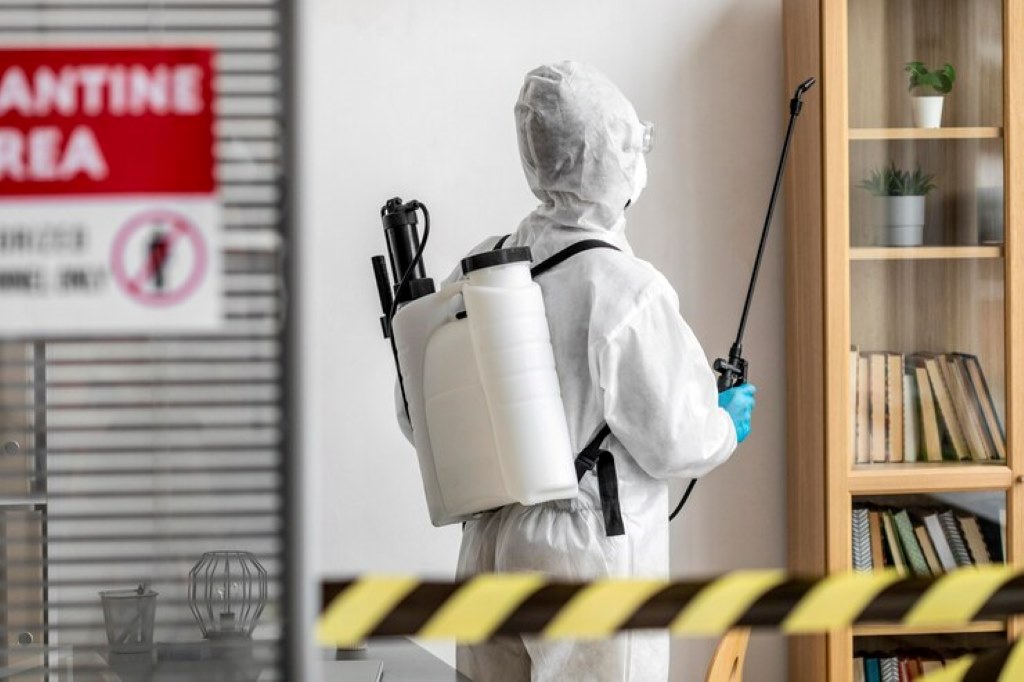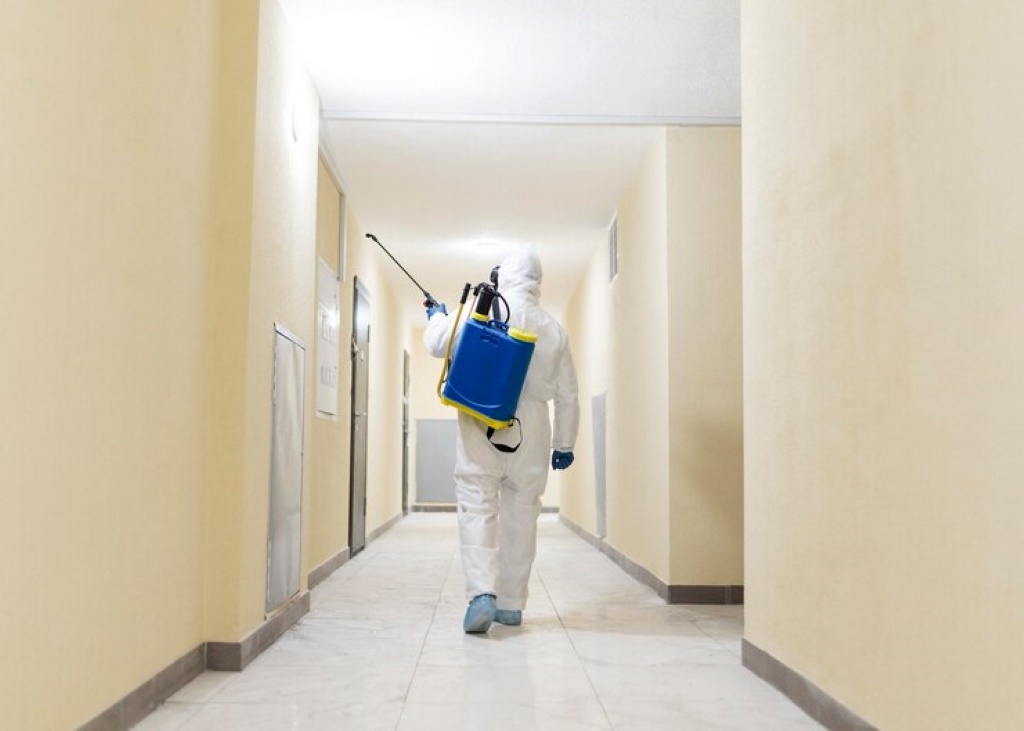For pet lovers, our furry companions are more than just animals; they are members of our family. We provide them with love, care, and a safe home.
However, there’s another family member to consider when it comes to creating a safe and comfortable environment for our pets: the pests that can infest our homes.
In this comprehensive guide, we will explore an effective and pet-friendly approach to home pest control.

Pets and Pests: The Connection
Pets can inadvertently attract pests due to various reasons, such as food remnants, their fur, and the odors they emit.
While it’s crucial to keep your home clean to minimize the attraction of pests, it’s also essential to employ pet-safe pest control methods that protect both your furry friends and your family.
Common Household Pests
Before we dive into a home pest control plan, let’s familiarize ourselves with some common household pests that pet owners often encounter:
Fleas: These tiny, blood-sucking insects can infest your pets and home, causing itchiness and discomfort for both you and your pets.
Ticks: Ticks can transmit diseases to your pets, and they are often found in grassy areas and wooded regions.
Ants: These pests are primarily attracted to food sources, which can include pet food.
Cockroaches: Cockroaches are known for carrying diseases and are a common household pest.
Rodents: Rats and mice are attracted to pet food, water, and the warmth of your home, potentially carrying diseases and causing damage.
Mosquitoes: While mosquitoes are more of an outdoor nuisance, they can transmit diseases like heartworm to your pets.
Creating a Pet-Safe Pest Control Plan
Now that we know the potential pests, it’s time to create a home pest control plan that is safe for our pets. This plan involves a combination of prevention, pet-friendly products, and professional assistance.
Regular Cleaning and Maintenance
The first step in pest control is maintaining a clean and tidy home. Regularly clean your pet’s feeding and water areas, as food residue can attract pests.
Also, ensure your trash is securely sealed. Vacuum your home frequently, paying close attention to pet bedding and common pet hangout spots. A clean environment is less attractive to pests.
Pet Hygiene
Maintaining your pet’s hygiene is crucial. Regular baths and grooming can help prevent flea and tick infestations.
Check your pets for any signs of pests, and consult your veterinarian for safe and effective pet-friendly pest control products.

Natural Pest Repellents
There are many natural remedies that can help repel pests. For example, cedarwood chips or essential oils can deter fleas and ticks.
Diatomaceous earth, a non-toxic powder, can be sprinkled in areas where you suspect pests to help control them.
Pet-Safe Pest Control Products
When it comes to using pest control products, it’s essential to choose ones that are safe for your pets. Look for products labeled as pet-friendly or pet-safe, and always follow the manufacturer’s instructions.
Here are some options:
Flea and Tick Control: Use flea and tick control products specifically designed for pets. Many of these are available in spot-on treatments, collars, or oral medications.
Ant and Cockroach Control: For ants and cockroaches, you can use pet-safe baits and traps. These products are typically enclosed, preventing pets from coming into contact with the bait.
Rodent Control: If you have a rodent problem, consider using humane traps to catch and release them. Avoid using traditional snap traps or poison baits, as these can harm your pets.
Mosquito Control: To reduce mosquitoes, you can use pet-safe mosquito repellents. Ensure your pet is protected from mosquito-borne diseases.

Professional Pest Control Services
In some cases, the infestation may be severe and require professional pest control services. When hiring a pest control company, be sure to inform them that you have pets, and ask for their pet-safe pest control options.
They should be knowledgeable about using safe practices around pets and be willing to accommodate their furry friends.
Preventing Pests in the Yard
In addition to controlling pests inside your home, it’s crucial to prevent them from invading your yard, where your pets often spend time. Here are some tips for keeping your outdoor space pest-free:
Keep the Yard Clean: Remove any debris, old pet toys, and waste from your yard regularly. These can attract pests like ants and rodents.
Maintain the Lawn: A well-maintained lawn is less attractive to pests. Regular mowing and trimming of bushes and trees can help reduce hiding spots for ticks and other pests.
Fencing: Install pet-friendly fencing to keep out unwanted wildlife and prevent your pets from wandering into areas where pests may be prevalent.
Use Pet-Safe Yard Products: Be cautious with the products you use in your yard. Some fertilizers, herbicides, and pesticides can be toxic to pets. Always opt for pet-safe alternatives.
Tick and Mosquito Prevention: Consider tick and mosquito prevention treatments for your yard. There are various pet-safe products that can help reduce the risk of these pests in your outdoor space.
Pet Safety First
The health and safety of your pets should always be the top priority. When implementing any pest control measures, ensure that they won’t harm your animals. Here are some additional pet safety tips to keep in mind:
Read Labels Carefully: Always read product labels and follow the instructions diligently. If the product is not explicitly labeled as safe for pets, don’t use it near your animals.
Consult Your Veterinarian: Before using any pest control products on your pets, consult your veterinarian. They can recommend safe and effective options tailored to your pet’s specific needs.
Observe Your Pets: After applying any pest control product, monitor your pets for adverse reactions. If you notice any unusual behavior or symptoms, contact your veterinarian immediately.
Store Products Safely: Keep all pest control products out of your pet’s reach. Even if a product is safe when applied correctly, ingestion can be harmful.
Conclusion
As pet lovers, our goal is to provide a safe and sound environment for our furry family members. Protecting them from household pests is an essential part of achieving this goal.
By following a comprehensive and pet-friendly pest control plan that includes regular cleaning, natural repellents, safe pest control products, and professional services when necessary, you can create a home where both your pets and your family can live comfortably and pest-free.
Remember, a pest-free home is a happy and healthy home for your beloved animals.
